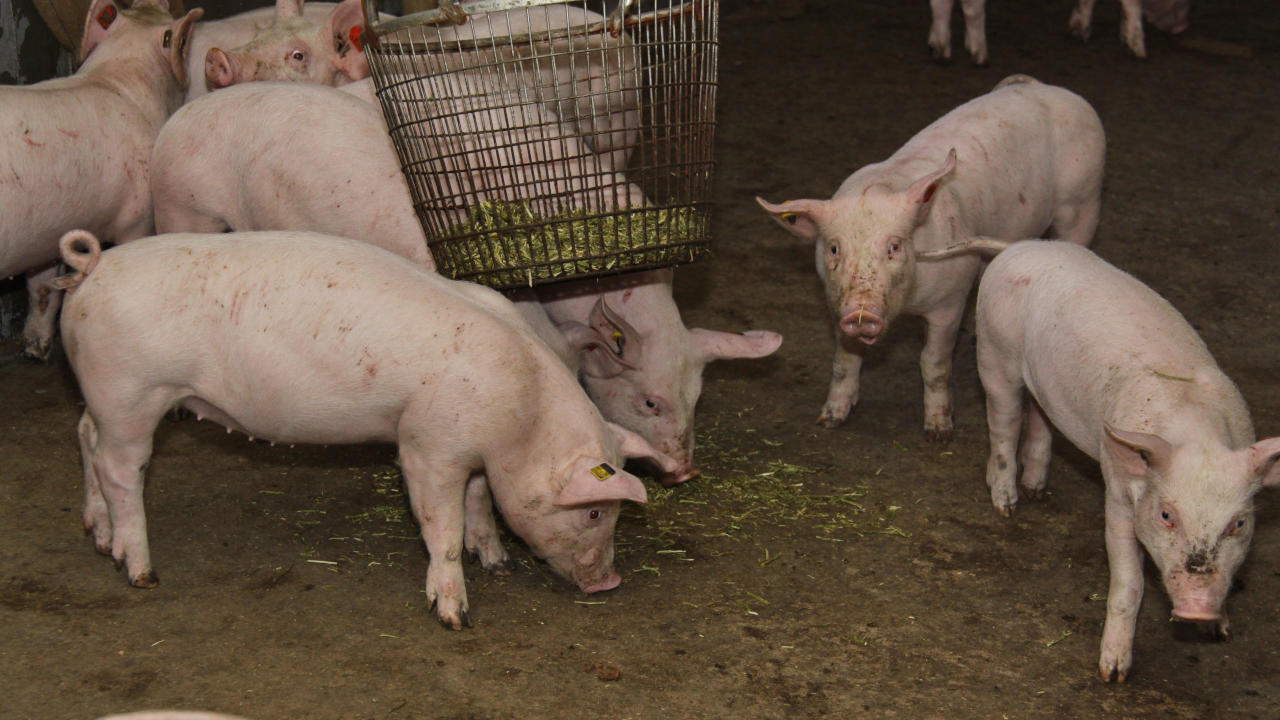Tail biting is an abnormal behaviour, involving the biting of pigs in the tails of their penmates, resulting in tail injuries. It is a response to boredom, insufficient stimulation, and frustration related to negative environmental and management factors that can increase pigs’ stress levels. Tail biting is a multi-factorial problem, filling up a ‘cumulative risk bucket’. At a certain point, the bucket overflows, and tail biting starts.
Why bother about tail biting?
Tail biting causes pain, and indicates compromised animal welfare in both biter and victim pigs. It leads to lower carcass weight and condemned or trimmed carcasses. This, in turn, means economic losses for pig farmers. Tail docking, as a remedy to reduce tail biting, also causes pain, fear and frustration. Tail docking may only be carried out if there is evidence of previous tail lesions, and only after all known risk factors have been addressed.
Stages of tail biting
Tail biting typically occurs in different stages:
- Pre-injury tail chewing is difficult to detect based on inspection of the tails, but early signs include hanging/clamped tails, tail wagging, hairless tails (there should be a clear plume of hair at the tip of the tail), and restlessness;
- In the damaging stage, biting is more forceful, blood is present from wounded tails and the behaviour escalates within the group.
- Later on, more severe injuries are visible and larger parts of the area around the tail may have been eaten away: at this stage it is called cannibalism.
Guidance
The Commission has developed the Commission Staff Working Document on how to implement the Commission Recommendation and best practices to reduce the need for tail-docking. Moreover, the Commission’s leaflet Cutting the need for tail docking, available in 8 languages, recommends actions to take for each of the six key (risk) factors: Environmental enrichment; Climate; Health status; Competition over resources; Diet; and Pen structure and cleanliness.
Welfare indicators for inspections for assessment of (the risks for) tail biting are given in the next section.
Source photo: ©Bracke et al. 2012

